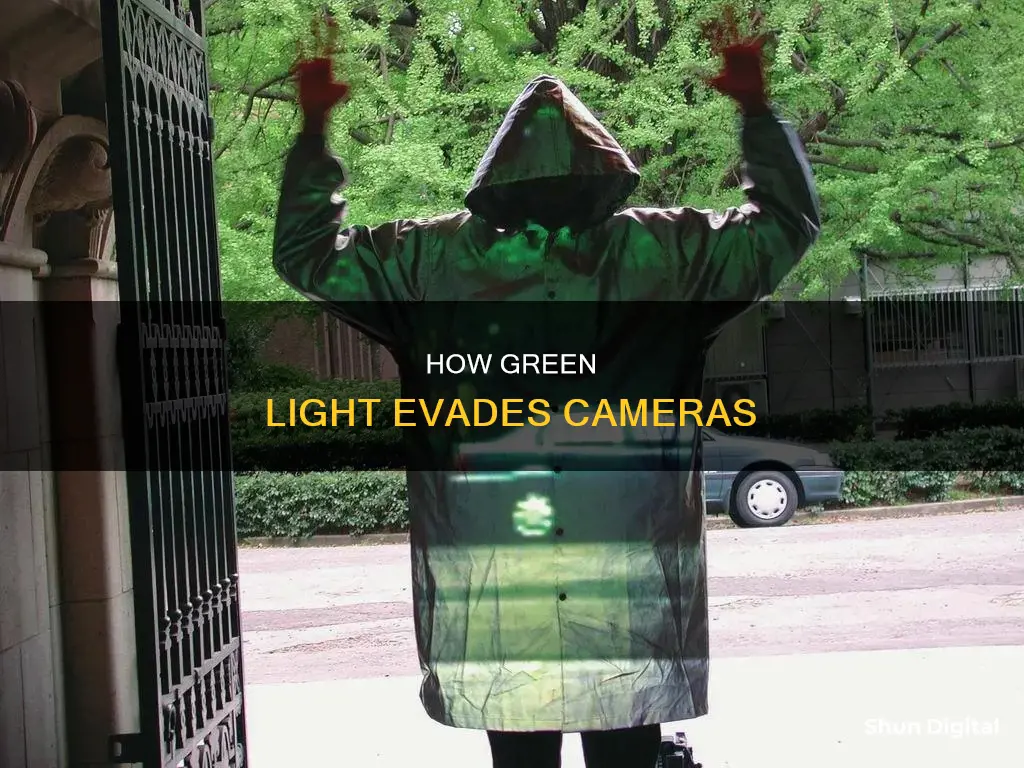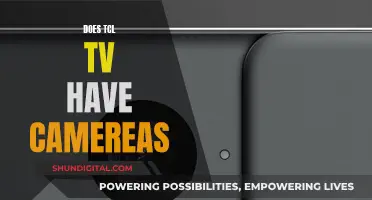
Green screens are used in film production to replace the background with a desired image. The green colour is singled out and digitally removed, allowing the other image to show through. Green is used because it is the least likely colour to be found in human skin tones, making it easy to remove in post-production. However, green screens can be challenging when used with darker backgrounds, as the colour might reflect and bleed over to the person in front of it.
| Characteristics | Values |
|---|---|
| Cameras not recognizing green | It is not that cameras do not recognize green, but rather that it is easier to use computer software to replace the green color with another image |
| Green screens | Green screens are used to digitally remove the selected color (usually green) and replace it with another image |
| Human skin tones | Green is the least likely color to be found in human skin tones, which is why it is used for chroma keying |
| Lighting | Green screens require less light than blue screens, but green light can bounce off the screen onto the subject |
What You'll Learn
- Cameras do see green, but filmmakers use chroma keying to remove it
- Green is used as it's not usually found in skin tones or clothing
- Green is the easiest colour to replace without interfering with other colours
- Blue is sometimes used as a second-choice colour
- Green screens are used when the desired background isn't available

Cameras do see green, but filmmakers use chroma keying to remove it
Cameras do see green, but filmmakers use a technique called "chroma keying" to remove it. This technique is based on replacing a solid colour with a different image. In this case, filmmakers use a green screen as a background, which is then replaced with a different image in post-production. This is done because green is the least likely colour to be found in human skin tones, making it the easiest colour to remove without interfering with other colours.
Chroma keying is a visual effects (VFX) technique that involves layering two images or video streams together. It is often used when the desired background is not available or is hard to access. For example, filmmakers can use a green screen to place actors in a fictional, historical, or futuristic setting.
The process of chroma keying involves using computer software to replace everything of a chosen colour (usually green) with a separate image. This technique has been made easier with the advent of digital cameras and video editing software, which has made it more accessible and affordable for filmmakers.
It is important to note that any colour can be used for chroma keying, but green is typically preferred because digital image sensors are more sensitive to green light. Additionally, green is a good choice for compositing video in daytime backgrounds, as the leftover greens blend well with the footage. However, green may not be the best choice for darker backgrounds, as it can cause messy colour work in post-production.
In summary, while cameras do see green, filmmakers use chroma keying to remove it and replace it with a different background image. This technique has become a valuable tool in film production, allowing filmmakers to create immersive and creative visuals.
What Cameras Capture That Our Eyes Can't See
You may want to see also

Green is used as it's not usually found in skin tones or clothing
Green screens are used in film production, news and weather reports to place the desired background behind the subject when it is not available. The green screen is placed behind the subject or actor, and then, using chroma keying, the green colour is digitally removed and rendered transparent, allowing the other image to show through.
Green is used as it is the least likely colour to be found in human skin tones. This means it can be easily removed in post-production, assuming there is a human in front of the screen. Green is also not usually found in clothing, so people's arms won't be removed either. This is why green is often chosen over blue, the "second-in-line" colour.
However, green doesn't work for everything. For example, Kermit the Frog would disappear if placed in front of a green screen. In this case, a blue screen would be used. The key rule is no matching colours. The background has to be a completely different colour from the subject.
Green is also an excellent choice for compositing video in a daytime background. The leftover greens blend much better with the daytime footage. However, it can be challenging to blend green against darker backgrounds. Blue screens are ideal for replicating nighttime or darker conditions.
The Camera's Eye: What Does It Truly See?
You may want to see also

Green is the easiest colour to replace without interfering with other colours
However, green doesn't work for everything. For example, if you were filming Kermit the Frog, you wouldn't be able to use a green screen because he would disappear. In this case, a blue screen would be used.
Green is also quite bright, which can lead to more spills, and the colour might reflect and bleed over to the person in front of it. This can be tricky to edit in post-production. To avoid this problem, ensure there is enough distance between the background and the person in front of it.
Blue screens need twice as much light as green screens, but they cause much less spillover of colour. Blue screens are ideal for replicating nighttime or darker conditions, and colour correction is much cleaner than with green screens.
Galaxy Watch Camera Features: What You Need to Know
You may want to see also

Blue is sometimes used as a second-choice colour
The key rule when using a green or blue screen is to ensure there is no colour matching between the subject and the screen. For example, if an actor is wearing a bright green tie in front of a green screen, the tie will be rendered transparent. Therefore, it is important to maintain a distinct colour difference between the subject and the screen.
Blue screens are also preferable when replicating nighttime or darker conditions, as they require twice as much light as green screens and exhibit less colour spillover. Colour correction against blue screens is also much cleaner than with green screens, which can lead to messy colour work in post-production.
Ultimately, the choice between a green or blue screen depends on the specific requirements of the filming project, with green being the primary choice due to the higher sensitivity of digital image sensors to green light.
Access Samsung Camera on the Web: A Step-by-Step Guide
You may want to see also

Green screens are used when the desired background isn't available
Green screens are used as a background when filming or taking photographs. The technique is called "chroma keying" and involves digitally replacing the green colour with a desired image or video. This is done in post-production.
Green is used because it is distinct from skin tones and is not usually found in clothing. This means that the person or object in the foreground will not be affected when the green colour is digitally removed. It is also a colour that digital image sensors are sensitive to, making it easier to replace.
Blue screens are also used for the same purpose, but green is generally preferred for digital image and video cameras, whereas blue is used for film.
Troubleshooting Apple Watch Camera Issues
You may want to see also
Frequently asked questions
Cameras can see green. In fact, digital image sensors are more sensitive to green light.
Green is used for chroma keying because it is the least likely colour to be found in human skin tones, so it can be easily removed in post-production.
Chroma keying is a technique where a solid colour background is replaced with a separate image. It is usually done in post-production.
Any colour can be used for chroma keying, but green and blue are the most common because they are the easiest to replace without interfering with other colours.







